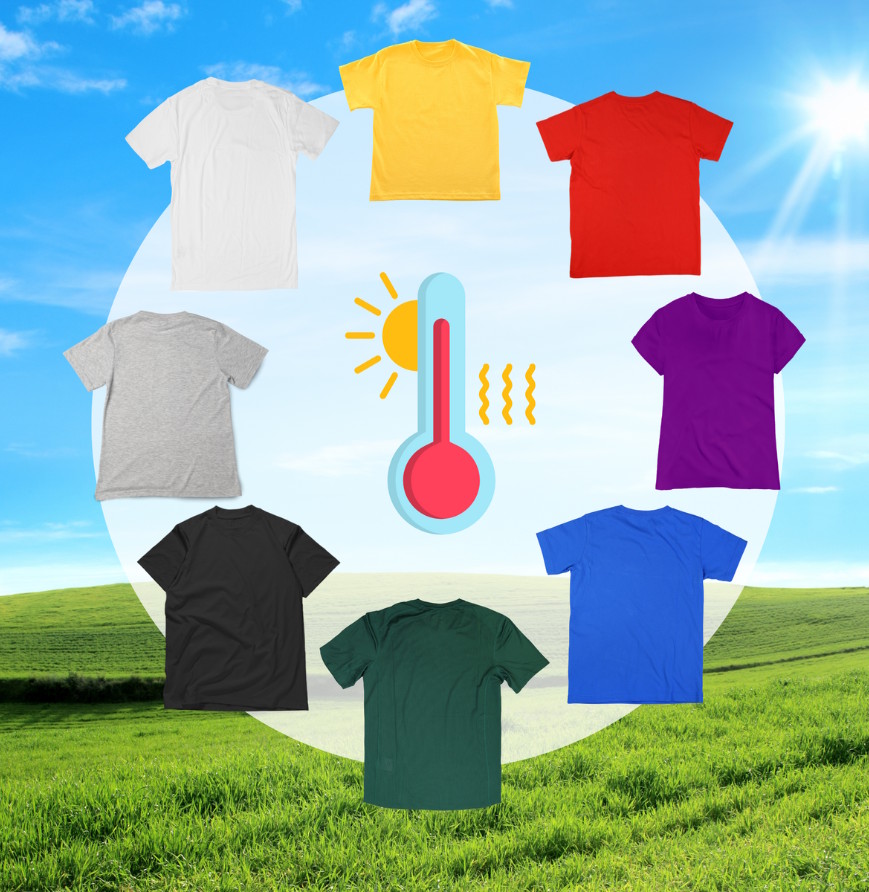You have learnt that dark-colored clothes or surfaces heat up faster in the sun. That’s because dark colors absorb most of the sunlight that falls on them. That is why it is recommended that one should wear light color clothes in summer. But have you ever thought about the other colors – red, blue, green, or yellow? Do they all absorb heat the same way, or are some better at trapping sunlight than others?
Sir Isaac Newton discovered that sunlight could be split into a rainbow of colors – violet, indigo, blue, green, yellow, orange, and red. In this activity, you will explore how each of these colors absorbs heat differently and find out which one traps the most energy from sunlight.
Science Involved
When light falls on an object, some of it is absorbed and some is reflected. The color you see is actually the light that is reflected back to your eyes. For example, a red object looks red because it reflects red light and absorbs most of the other colors. A black object absorbs almost all the light, while a white object reflects nearly all of it.
Each color of light also carries a different amount of energy. Colors like violet and blue have shorter wavelengths and more energy, while red and orange have longer wavelengths and less energy.

This difference in energy affects how much heat each color can absorb. When you expose colored objects or liquids to sunlight, the ones that absorb more light energy heat up faster. By comparing how much the temperature changes for each color, you can not only find out which color absorbs the most heat, but also which color carries more energy.
Activity
Requirements
10 transparent beakers, 100 ml water for each beaker, watercolors (violet, indigo, blue, green, yellow, orange, red, black, white), thermometer (a digital thermometer is preferred for its better precision and smaller least count; a clinical thermometer may be used if the surrounding temperature is well below 40°C), measuring cup, sunlight or an open area.
Procedure
-
Label 10 transparent beakers with the colors of the rainbow – violet, indigo, blue, green, yellow, orange, and red. Also label one beaker as “black”, one as “white”, and one as “clear”.
-
Pour 100 ml of water into each beaker using a measuring cup.
-
Add a few drops of watercolor to each beaker according to its label. Leave the “clear” beaker without any color.
-
Stir gently to mix the colors evenly.
-
Place all the beakers side by side in direct sunlight for about one hour. Make sure they all get the same amount of sunlight.
-
Before placing them in the sun, record the starting temperature of the water in each beaker.
-
Try to predict, with justification, the order in which the different colored water will heat up.
- Think about the clear and white-colored water. Which one do you predict will get warmer under sunlight, and why? Write down your reasoning before you begin heating the samples.
-
After an hour, measure and record the final temperature of each beaker.
-
Observe and note which colors show the highest and lowest temperature rise.
-
Try repeating the experiment on a different day or under partial shade and compare the results.
Observations
| Color of Water | Initial Temperature | Final Temperature |
|---|---|---|
| Clear | ||
| White | ||
| Red | ||
| Orange | ||
| Yellow | ||
| Green | ||
| Blue | ||
| Indigo | ||
| Violet | ||
| Black |
Reflect and Discuss
-
What was the sequence of colors based on how much their temperature increased? Did this order match your prediction? If not, what could be the reason for the difference?
-
Blue light has more energy than red light, and red-colored water absorbs most other colors. So, in theory, the red-colored water will absorb more energy and should get hotter than the other colors. Do your readings support this idea? If your results were different, what might explain it? Take a look at the solar radiation spectrum. It shows how much energy sunlight carries at different wavelengths and might help you understand your results better.

Solar energy spectrum. Image Credit: McKenzie, Richard. UV and You - How did clear water compare to the colored ones in heating up? Why do you think it behaved that way?

